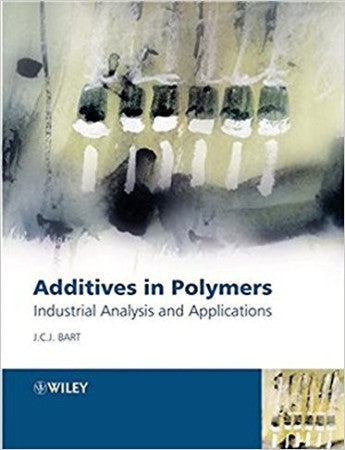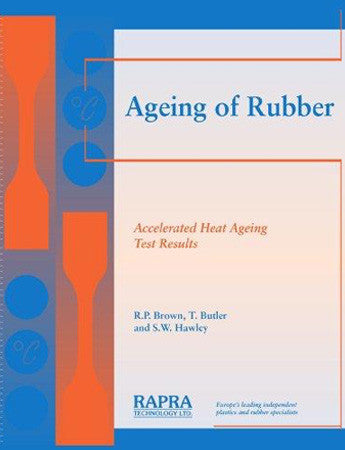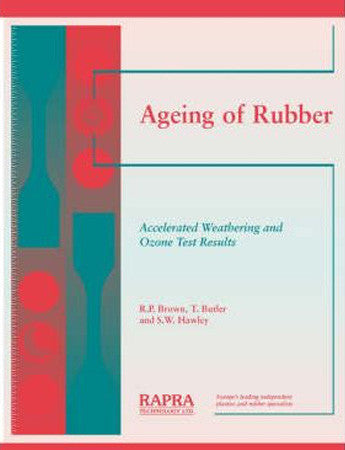Additives in Polymers: Industrial Analysis and Applications
Foreword.
Preface.
About the Author.
Acknowledgements.
Chapter 1: Introduction.
1.1 Additives.
1.2 Plastics formulations .
1.3 Economic impact of polymer additives.
1.4 Analysis of plastics.
1.5 Bibliography.
1.6 References.
Chapter 2: Deformulation Principles.
2.1 Polymer identification.
2.2 Additive analysis of rubbers: ‘Best Practice’.
2.3 Polymer extract analysis.
2.4 In situ polymer/additive analysis.
2.5 Class-specific polymer/additive analysis.
2.6 Bibliography.
2.7 References.
Chapter 3: Sample Preparation Perspectives.
3.1 Solvents.
3.2 Extraction strategy.
3.3 Conventional extraction technologies.
3.4 High-pressure solvent extraction methods.
3.5 Sorbent extraction.
3.6 Methodological comparison of extraction methods.
3.7 Polymer/additive dissolution methods.
3.8 Hydrolysis.
3.9 Bibliography.
3.10 References.
Chapter 4: Separation Techniques.
4.1 Analytical detectors.
4.2 Gas chromatography.
4.3 Supercritical fluid chromatography.
4.4 Liquid chromatography techniques.
4.5 Capillary electrophoretic techniques.
4.6 Bibliography.
4.7 References.
Chapter 5: Polymer/Additive Analysis: The Spectroscopic Alternative.
5.1 Ultraviolet/visible spectrophotometry.
5.2 Infrared spectroscopy.
5.3 Luminescence spectroscopy.
5.4 High-resolution nuclear magnetic resonance spectroscopy.
5.5 Bibliography.
5.6 References.
Chapter 6: Organic Mass-Spectrometric Methods.
6.1 Basic instrumentation.
6.2 Ion sources.
6.3 Mass analysers.
6.4 Direct mass-spectrometric polymer compound analysis.
6.5 Ion mobility spectrometry.
6.6 Bibliography.
6.7 References.
Chapter 7: Multihyphenation and Multidimensionality in Polymer/Additive Analysis.
7.1 Precolumn hyphenation.
7.2 Coupled sample preparation – spectroscopy/spectrometry.
7.3 Postcolumn hyphenation.
7.4 Multidimensional chromatography.
7.5 Multidimensional spectroscopy.
7.6 Bibliography.
7.7 References.
Chapter 8: Inorganic and Element Analytical Methods.
8.1 Element analytical protocols.
8.2 Sample destruction for classical elemental analysis.
8.3 Analytical atomic spectrometry.
8.4 X-ray spectrometry.
8.5 Inorganic mass spectrometry.
8.6 Radioanalytical and nuclear analytical methods.
8.7 Electroanalytical techniques.
8.8 Solid-state speciation analysis.
8.9 Bibliography.
8.10 References.
Chapter 9: Direct Methods of Deformulation of Polymer/Additive Dissolutions.
9.1 Chromatographic methods.
9.2 Spectroscopic techniques.
9.3 Mass-spectrometric methods.
9.4 References.
Chapter 10: A Vision for the Future.
10.1 Trends in polymer technology.
10.2 Trends in additive technology.
10.3 Environmental, legislative and regulatory constraints.
10.4 Analytical consequences.
10.5 Epilogue.
10.6 Bibliography.
10.7 References.
Appendix I: List of Symbols.
Appendix II: Functionality of Common Additives Used in Commercial Thermoplastics, Rubbers, and Thermosetting Resins.
Appendix III: Specimen Polymer Additives Product Sheets.
Index.
This industrially relevant resource covers all established and emerging analytical methods for the deformulation of polymeric materials, with emphasis on the non-polymeric components.
- Each technique is evaluated on its technical and industrial merits.
- Emphasis is on understanding (principles and characteristics) and industrial applicability.
- Extensively illustrated throughout with over 200 figures, 400 tables, and 3,000 references.
Foreword.
Preface.
About the Author.
Acknowledgements.
Chapter 1: Introduction.
1.1 Additives.
1.2 Plastics formulations .
1.3 Economic impact of polymer additives.
1.4 Analysis of plastics.
1.5 Bibliography.
1.6 References.
Chapter 2: Deformulation Principles.
2.1 Polymer identification.
2.2 Additive analysis of rubbers: ‘Best Practice’.
2.3 Polymer extract analysis.
2.4 In situ polymer/additive analysis.
2.5 Class-specific polymer/additive analysis.
2.6 Bibliography.
2.7 References.
Chapter 3: Sample Preparation Perspectives.
3.1 Solvents.
3.2 Extraction strategy.
3.3 Conventional extraction technologies.
3.4 High-pressure solvent extraction methods.
3.5 Sorbent extraction.
3.6 Methodological comparison of extraction methods.
3.7 Polymer/additive dissolution methods.
3.8 Hydrolysis.
3.9 Bibliography.
3.10 References.
Chapter 4: Separation Techniques.
4.1 Analytical detectors.
4.2 Gas chromatography.
4.3 Supercritical fluid chromatography.
4.4 Liquid chromatography techniques.
4.5 Capillary electrophoretic techniques.
4.6 Bibliography.
4.7 References.
Chapter 5: Polymer/Additive Analysis: The Spectroscopic Alternative.
5.1 Ultraviolet/visible spectrophotometry.
5.2 Infrared spectroscopy.
5.3 Luminescence spectroscopy.
5.4 High-resolution nuclear magnetic resonance spectroscopy.
5.5 Bibliography.
5.6 References.
Chapter 6: Organic Mass-Spectrometric Methods.
6.1 Basic instrumentation.
6.2 Ion sources.
6.3 Mass analysers.
6.4 Direct mass-spectrometric polymer compound analysis.
6.5 Ion mobility spectrometry.
6.6 Bibliography.
6.7 References.
Chapter 7: Multihyphenation and Multidimensionality in Polymer/Additive Analysis.
7.1 Precolumn hyphenation.
7.2 Coupled sample preparation – spectroscopy/spectrometry.
7.3 Postcolumn hyphenation.
7.4 Multidimensional chromatography.
7.5 Multidimensional spectroscopy.
7.6 Bibliography.
7.7 References.
Chapter 8: Inorganic and Element Analytical Methods.
8.1 Element analytical protocols.
8.2 Sample destruction for classical elemental analysis.
8.3 Analytical atomic spectrometry.
8.4 X-ray spectrometry.
8.5 Inorganic mass spectrometry.
8.6 Radioanalytical and nuclear analytical methods.
8.7 Electroanalytical techniques.
8.8 Solid-state speciation analysis.
8.9 Bibliography.
8.10 References.
Chapter 9: Direct Methods of Deformulation of Polymer/Additive Dissolutions.
9.1 Chromatographic methods.
9.2 Spectroscopic techniques.
9.3 Mass-spectrometric methods.
9.4 References.
Chapter 10: A Vision for the Future.
10.1 Trends in polymer technology.
10.2 Trends in additive technology.
10.3 Environmental, legislative and regulatory constraints.
10.4 Analytical consequences.
10.5 Epilogue.
10.6 Bibliography.
10.7 References.
Appendix I: List of Symbols.
Appendix II: Functionality of Common Additives Used in Commercial Thermoplastics, Rubbers, and Thermosetting Resins.
Appendix III: Specimen Polymer Additives Product Sheets.
Index.
Jan C.J. Bart (Ph.D. Structural Chemistry, University of Amsterdam) is a senior scientist with a broad interest in materials characterisation, heterogeneous catalysis and product development who spent an industrial career in R&D with Monsanto, Montedison and DSM Research in various countries. The author has held several teaching assignments and researched extensively in both academic and industrial areas; he authored over 250 scientific papers, including chapters in books. Dr. Bart has acted as a Ramsay Memorial Fellow at the Universities of Leeds (Colour Chemistry) and Oxford (Material Science), a visiting scientist at Institut de Recherches sur la Catalyse (CNRS, Villeurbanne), and a Meyerhoff Visiting Professor at WIS (Rehovoth), and held an Invited Professorship at USTC (Hefei). He is currently a Full Professor of Industrial Chemistry at the University of Messina. He is also a member of the Royal Society of Chemistry, Royal Dutch Chemical Society, Society of Plastic Engineers and The Institute of Materials.




